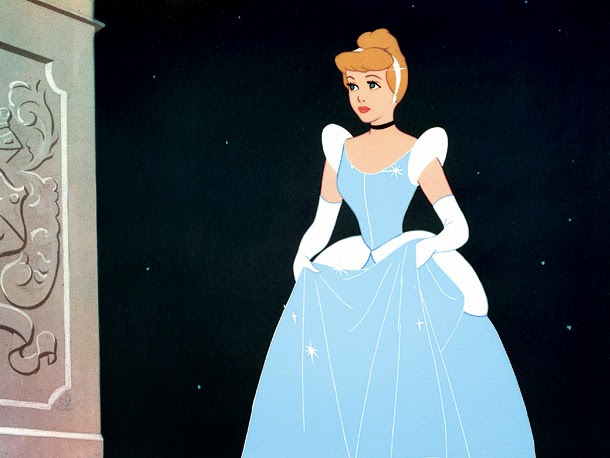Is anyone a fan of the eighteenth century? Fans have been an important luxury item, status symbol, and practical object throughout history. Fans survive from cultures all over the world, many showcasing incredible artistic virtuosity. While working at the Chicago History Museum in 2014 I was lucky enough to study some of the fans in the collection. This post will highlight two of...
The Dress Detective: A Practical Guide to Object-Based Research in Fashion by Ingrid Mida and Alexandra Kim Bloomsbury "Unlocking the personal and cultural narratives hidden in the folds of a garment is a little bit like being Sherlock Holmes. A dress detective looks for and interprets the clues..." - Ingrid Mida and Alexandra Kim I love this quote which begins the Introduction to...
We're finishing up Textile Month after some technical difficulties! This week we bring you the long awaited Part 2 of our Art Deco textiles series. Catch up with Part 1 at the link below, and then read all about how American history and contemporary life influenced new textile design in the 1920s! Part 1: Africana Prints and Non-Western Influences Sample from the "American...
Nautical Chic by Amber Jane Butchart Abrams (USA); Thames & Hudson Ltd. (UK) "It is France, the United States, and Britain whose naval uniforms and maritime clothing have had a lasting legacy around the globe. From tailoring to sportswear, and from haute couture to the high street, these countries are the key producers and exporters of nautical style. Intertwined with politics, imperialism, war,...
It's Textile Month here on The Fashion Historian! Each week this month we'll be bringing you a textile themed post. This week, in Part 1 of a two-part series, learn about how the art of non-Western cultures influenced the explosion of American textile design in the 1920s! Safari silk titled "Kando" or "Samburu" by Belding-Heminway Co., 1930. Newark Museum, New Jersey. This print...
It's Textile Month here on The Fashion Historian! Each week this month we'll be bringing you a textile themed post. This week, learn about printed textiles in eighteenth-century America! Printed cotton celebrating American Independence, ca. 1785. Designed by Henry Gardiner and made in Southeast England. The Metropolitan Museum of Art, 46.106.1 ...
Dr. Kimberly Chrisman-Campbell recently published her first book, Fashion Victims: Dress at the Court of Louis XVI and Marie Antoinette. After looking through this lavish text, I wanted to know a bit more about how this book came together. What is the story behind the story? Find out in my exclusive interview below! ...
Fashion Victims: Dress at the Court of Louis XVI and Marie Antoinette by Kimberly Chrisman-Campbell Yale University Press "Fashion, which its detractors have called slight, inconstant, fickle, and frivolous, is, however, fixed in its principles... We see how constant it is in seizing all remarkable events, adapting them, recording them in its annals, IMMORTALIZING them in memory." ~ Cabinet des modes, ou Les...
Myth: Fashionable eighteenth-century ladies shaved off their eyebrows and used false eyebrows made of mouse fur. Grace Dalrymple Elliot by Thomas Gainsborough, c. 1778. Private Collection. Are those eyebrows made of mice? ...
Any visitor to the Metropolitan Museum of Art in New York City should stop by Gallery 599 on their tour of the museum. It's a small gallery, to get there you simply descend a small flight of stairs tucked away in the back corner of one of the large medieval galleries. Gallery 599 is located by the door to the Ratti Textile Center,...
One of the most famous and persistent images of the eighteenth century is a woman with an enormous tall wig decorated with ribbons, feathers, and all manner of figurines. Known as the pouf, this tall hairstyle is often cited as a visual representation of the excess of the 18th century. But these tall hairstyles were not just an example of extreme elite fashion....
Part 1: Snow White from Snow White and the Seven Dwarfs (1937) As a fashion historian, I find that an interesting aspect of Disney is how the animated features serve as records of the visual culture of their day. The Disney Princesses, a successful sub-franchise launched by Disney in the late 1990s, are everywhere these days. They have not been without controversy, but...
La mode à la girafe translates to giraffe fashion, that is, fashion inspired by and celebrating giraffes. Or, in the case of late 1820s France, the fashion influence of one very famous giraffe. Nicolas Hüet, Study of the Giraffe Given to Charles X by the Viceroy of Egypt, 1827. In the collection of the Morgan Library and Museum. ...
Left: Elizabeth Banks in Elie Saab Fall 2014 Couture Top Right: Three robes a la francaise from the Kyoto Costume Institute Bottom Right: Robe a la francaise, 1755-65, from the Metropolitan Museum of Art ...
Fashion has always had a strong relationship with new technology. In the late eighteenth century, looms ran on punch cards to weave complex textile designs-- the very first computing technology. In the nineteenth century, the discovery of synthetic dyes allowed fabrics to take on bright, eye-popping colors. In the twentieth century, an enormous range of textiles made from synthetic materials, each with its...
























